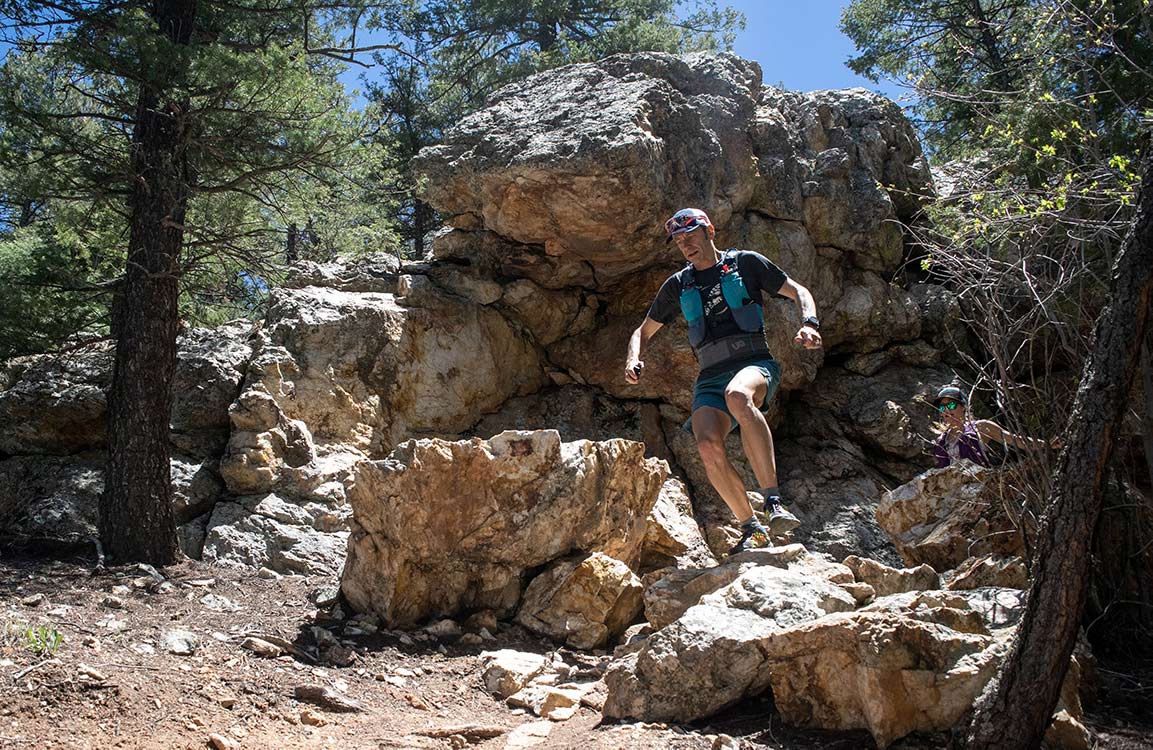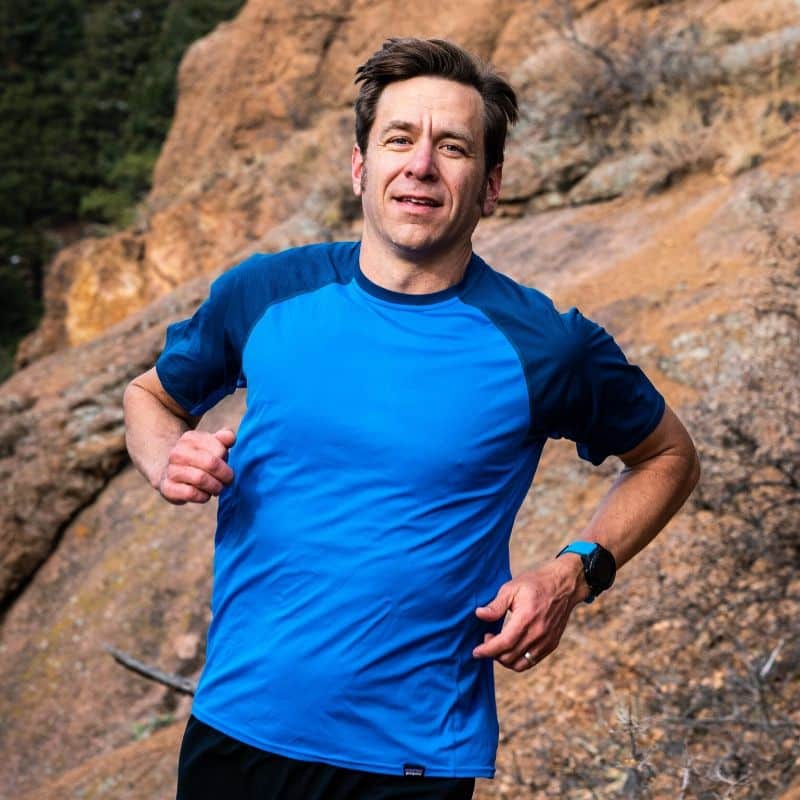
Training for ‘Last Person Standing’ Running Events and ‘Fastest Known Time’ Attempts
By Jason Koop,
Head Coach of CTS Ultrarunning
Over the past year, Fastest Known Times (FKTs) and virtual or in-person Last Person Standing (LPS) running events have grown in popularity. Although they gained notoriety because of the pandemic, I think these race formats will continue to draw athletes and eyeballs for a long time. There is plenty of demand and the events themselves are intriguing enough to thrive alongside traditional events post pandemic. And, that variety is good for athletes and the sport as a whole. The standard 50k, 50 mile, 100k, 100 mile distances do not have to encompass all of what ultrarunning has to offer. Ultrarunning is built for variety. Terrain, technical trail features, and elevation gain do not need to be the only points of differentiation we pay attention to when sizing up races.
While the standard challenges of being fit, tough and having a good nutrition game plan are consistent between the standard distance races and these more unique formats, there are some distinctive challenges associated with FKT and LPS events. While the prospect of a ‘new to you FKT’ might seem intriguing at first, after diving into the details you could feel overwhelmed, intimidated and even bail on the project altogether. But fret not. The prospect of running one of these non-traditional events may not be as far fetched as it initially seems on paper. With proper planning and thoughtful training you can thrive in these events just like the tried and true ultramarathons you are accustomed to.
It still has to be meaningful
Let’s face it, ultrarunning races are hard. Regardless of the format, length or terrain, chances are that whatever event you are focusing in on will be arduous. Many athletes turned to virtual races or personal projects as outlets for their pent-up ultrarunning energy. In my coaching experience, about half of the athletes I work with find meaning in some of these newly formed events. The other half do not, and they do one event, call it an ‘experience’ and vow to never toe the virtual line again. And, you don’t know what camp you will fall into until you try. So, your first training consideration for any of these newer formats is to find some meaning in what you are about to undertake. Just like the prospect of earning a big buckle or the connection you have to a particular course is meaningful enough to fuel the training process, the connection you have to an FKT or LPS race needs to have similar value. Don’t just do things because ‘they are there’. Choose your projects with intent and ensure they have significant meaning and connection to you.
Fitness still rules
At the end of the day, FKTs and LPS events are still running races. Just because you gather virtually and don’t drop off drop bags does not mean the event will be easy. Newer format events will require fitness just like any traditional ultramarathon. So, if you are signed up for the next virtual backyard ultra, 200-mile race or decide to undertake a personal project, keep in mind that your general training is not all that different from ultramarathon training for a similar duration event. To get yourself in the right program, work with a coach orcreate a training plan that is the most similar in time duration to the event you are preparing for.
Logistics matter
Logistical considerations are what will most likely be different for your newfound event. If you have been in the ultrarunning game for any appreciable amount of time, you are used to the pre-race routine of bib pickup, drop bag drop-off, pre-race pasta dinner, race day check in, and then the gun going off. With some of the newer race formats emerging, many of these aspects are wildly different or non-existent. For personal projects and FKT type attempts, you will need to decide when to start, where to set up support (if applicable), and even when to sleep. For last person standing events, you will need to think about what your interloop routine will be and how to set up your aid station. All of this planning takes time (just ask any race director). So, don’t neglect the logistics surrounding your event. Do some prior planning on how aid, start times and support will work. This will give you more confidence about the event itself as well as increase the connection with what you are doing.
Have goals
Just because your virtual event does not have a finisher chute and chip timing doesn’t mean that you can’t have goals. In fact, I would argue that both process and outcome goals are more critical in virtual events, FKTs and personal projects than they are during a traditional race. Aid stations, periodically seeing your crew, and the lure of the finish line add natural goal setting layers to the traditional racing process. Without these, it’s easy to get sucked into a ‘why am I out here again?’ mentality. So, during the process of deciding what event you want to tackle and how you are going to tackle it, also decide on what you want to accomplish and how you intend to do so.
► Free Ultrarunning Training Assessment Quiz
Take our free 2-minute quiz to discover how effective your training is and get recommendations for how you can improve.
If a particular time on an FKT-style project is meaningful to you (an outcome goal), break that time down segment by segment to provide intermediate checkpoints (process goals). If you are doing a last person standing event, have a goal for how long you want to run (outcome goal) and how you want to manage things like nutrition and your attitude as fatigue sets in (process goals).
Enjoying This Article? Get More Free Running Training Tips
Get our coaches' best training advice, delivered straight to your inbox weekly.
Newer event formats are here to stay. Some will be more popular than others and will resonate more or less with you. If you do decide to undertake one of these events, take some time to set it up properly. Train as if it were any other ultramarathon, look at your logistics, set goals and above all else, make sure that the event is meaningful to you.


Comments 2
Love your work Koop. Though I’ll throw in my 2 cents in regards to the LPS events and having a goal.
If you are wanting to get the maximum out of yourself here, I believe setting a distance/time goal can be extremely limiting to what a person can achieve as once you achieve that goal it becomes extremely difficult to continue mentally. An alternative option would be to have a goal of always attempting “one more lap” and setting rules for yourself such as you aren’t allowed to quit in camp.
I’ve told my wife that the only reason I don’t start the next lap is if I have a bone sticking out (yes it’s a bit dramatic, but sets the tone for the race) She holds me to that and we’ve managed to have some good results.
Good suggestions, Chris! These are great strategies that helped you tremendously last year. I hope you have another successful year with no bones sticking out and maybe a few more toenails willing to hold on.